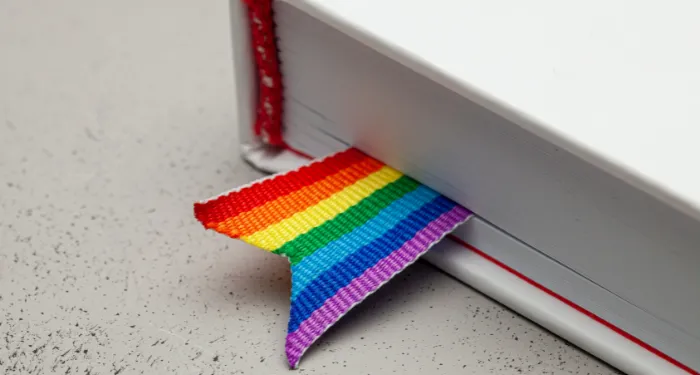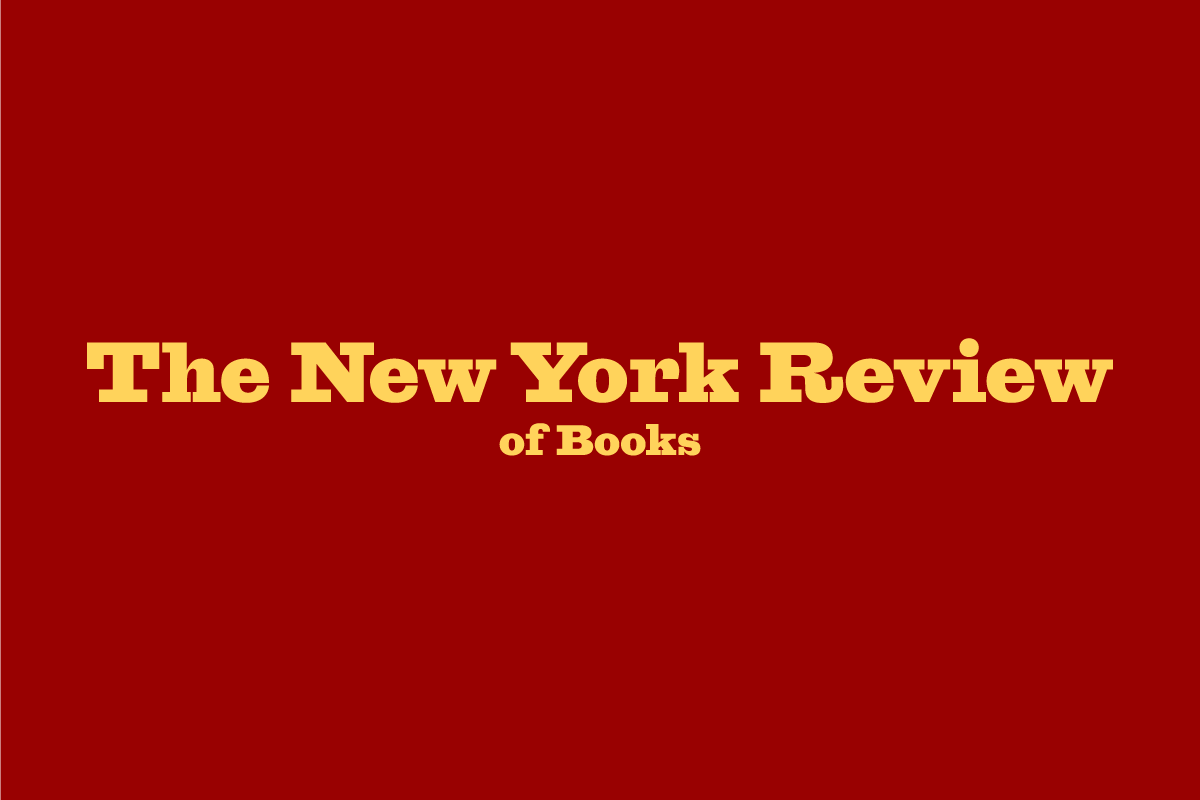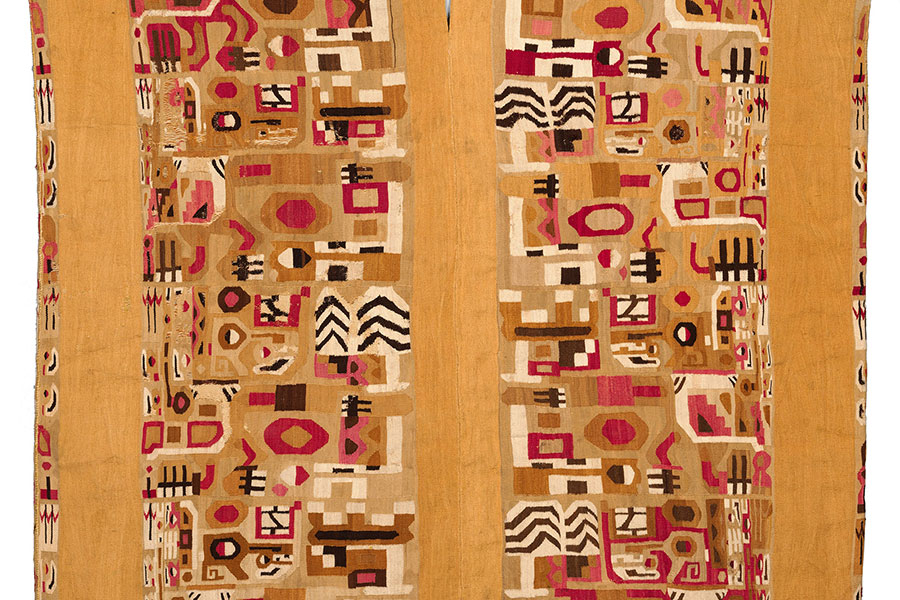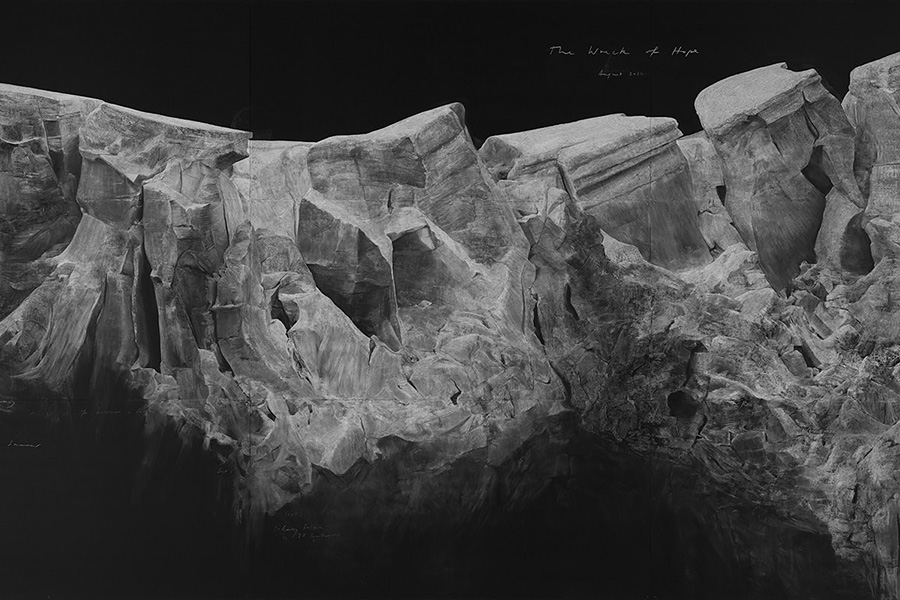In 2001 the British artist Tacita Dean made a three-minute-long 16mm film called The Green Ray. It begins with a countdown of flashing numbers: 11… 10…9…8…7…6…5…4…3…There is no 2 or 1. Just black, then sky, sun, and sea: a sunset over the Mozambique Channel, seen from a beach on the western coast of Madagascar. At the center of the square image is the sun. For a brief moment, as it touches the water, it bulges into a lightbulb shape, then slowly slips beneath the horizon while waves dart from the left edge of the image to the right. For most of the film the sunset’s colors change in familiar ways, until the two-and-a-half-minute mark, when the last sliver of yellow sun disappears and a bead of green light flashes in its place. Then only sky and sea remain, and the image goes black.
What Dean captured in that split second is a rare meteorological, or rather optical, phenomenon. The green ray is exceedingly difficult for humans to see, not least because the requisite dry, clear conditions are rare. Night after night for three weeks Dean filmed sunsets from a beach in the remote village of Morombe, and though she wasn’t sure that she had ever seen the flash, she believed she had captured it on film. Back in England she looked through her footage, and there it was—though it had eluded the digital camera of the people shooting beside her on the beach.
The Green Ray is an elegy for celluloid, which was gravely threatened by the preponderance of digital technology when Dean made the film. Its contention, hardly novel but delivered with shimmering clarity and beauty at a moment of uncertainty about how visual artists would go on making their work, was that celluloid had certain possibilities that other mediums did not. The critic Rosalind Krauss declared that Dean’s films could stand up to the “meretriciousness and vulgarity” of contemporary art in the late twentieth century, a “plight” that she attributed to the abandonment of the modernist principle that artists can accomplish more in any given medium when they accept its unique properties and constraints. By catching the green ray, Dean was celebrating the aspects of film—and by extension every artistic medium—that are “resolutely, materially specific.”
The Green Ray was one of four films projected—each for about six weeks—as part of Dean’s first major museum show in the United States, at the Menil Collection in Houston. Dean insists that her films be seen on celluloid rather than as digital reproductions, and for a long time she wrote to museums to chide them for any infringements on this policy. (In order to see The Green Ray and the two other films that weren’t on view during my visit, I had to ask permission from her gallery in New York, Marian Goodman, whose staff sent digital versions with a long disclaimer that begins, “The Artist has agreed to let you watch her film via Vimeo link. This is a low resolution, digital documentation of the work and not the work itself.”)
Film is not the only medium to which Dean has committed herself. The Menil show focused on her drawing, which she considers a cousin of film: grapho, she points out, is “to write,” and photographos is “to write with light.” For more than thirty years she has made a vigorous body of graphic work in chalk, pastel, and pencil (charcoal, graphite, and colored). At the entrance to the exhibition were five abstractions made in 2024 with pencil, gouache, and chalk on found slate boards: Blind and dusty, Green Folly, Wind-worms, Hooker’s Green, and Blind Folly, the last announcing the exhibition’s title. The free-form mark-making on these green boards—dots, curved lines, swirls, and spirals, amounting to a series of barely differentiable hazes—hinted at Dean’s open-ended and highly conceptual approach to drawing.
How, viewers wondered as they crossed the threshold into the main galleries, did Dean make these enormous images of trees? In Sakura (Totsube) (2024), a roughly ten-by-thirteen-foot black-and-white photograph of a lonely sakura tree in a clearing, every inch of sky is filled in with colored pencil of the softest pink, as if the air had absorbed the color and scent of the blossoms and left the tree lifeless. Wooden beams that look a bit like elongated easels prop up the branches, and their fragility is heightened by three visible vertical folds in the paper on which the photograph is printed. (In Japan some sakura trees must be buttressed to support their blossoms.) Sakura (Konpira) (2024), Dean’s color photograph of the Totsube tree’s three-hundred-year-old sibling, was on view at Marian Goodman in New York last year. Dean penciled Konpira’s blossoms in pink and left the sky blue, and the handmade blooms were visible from the street.
The leaves on the jacaranda in Purgatory (3rd Cornice), a slightly larger photograph that was designed for a production of the Divine Comedy staged in London in 2021 and Paris in 2023, are also filled in with colored pencil. Dean lent the tree its withered look and cloaked the building behind it in a ghoulish shadow by printing the color negative as a positive. Even deathlier than the sakura and the jacaranda are the craggy, leafless, rotting trees in Beauty (2006) and the seven-and-a-half-by-ten-inch Tree House for Rodney Graham (2009–2024). They are set against no buildings or forests, only expanses of gray. It seems that by making these haunting images Dean aimed to witness the very moment at which each tree would die (or, in the case of the jacaranda in Purgatory, cross over to the afterlife).
Beyond the trees, four vast works of white chalk on blackboard were hung together in a rectangular gallery soaked in natural light streaming through white louvers overhead. The largest, at about twelve by twenty-four feet, were The Montafon Letter (2017), a cascading avalanche, and The Wreck of Hope (2022), a grand iceberg that appears to be collapsing in on itself. One is approaching its demise at a rapid clip, the other gradually. Dean made each of them with only a small stick of chalk—the kind more familiar to schoolchildren than artists. The exhibition’s curator, Michelle White, notes in a book-length essay accompanying the show that the chalk is not applied with any fixative, nor is the blackboard glazed. “The drawing,” she writes of The Wreck of Hope, “has such physical fragility that it actually teeters on the brink of erasure.”
The Wreck of Hope is a reference to Caspar David Friedrich’s The Sea of Ice (1823–1824), an oil painting of an imagined Arctic shipwreck in which huge shards of ice jut up diagonally from the frozen ocean, parallel to the tilted mast of the capsized ship.* In Dean’s work the fine grains of the iceberg’s features are also seen from the side, but here no tragic story underpins the event before us. The pitch-black edges of the board around the hunk of ice are more than shadows; they encroach on the white chalk, eating away at it.
The same is true of The Montafon Letter, which, according to White, is based on an account of three seventeenth-century avalanches in the Austrian Alps. The first killed three hundred people; the second buried a priest who was officiating over the dead; the third, so the story goes, uncovered him, and he survived. Using only white chalk and the black of the board behind it, Dean renders sky, rock face, ice, a torrent of snow, smoke, shadow, and, near the bottom-right corner of the image, a black void that evokes the booming core of the avalanche. From a bench positioned about twenty feet away, I could discern minute marks just as clearly as the crevices between the panels. Dean calls attention to her mark-making rather than aspiring to photorealism.
Both The Wreck of Hope and The Montafon Letter are a specific kind of invention. No artist could make a plein air drawing of an avalanche tumbling toward them. And neither for much longer will an artist be able to make a plein air drawing of an iceberg. Not only does Dean imagine her subjects, as Friedrich did when he painted The Sea of Ice; she imagines the position of the artist on a planet facing catastrophe.
Another, somewhat smaller work of white chalk on blackboard, the four-paneled Sunset (2015), depicts a cloud that Dean saw while driving down Sunset Boulevard in Los Angeles. It resembles an atomic explosion. In Delfern Tondo (2024), a circular board ten feet in diameter, an ominous mass of clouds made from chalk is seen from below. It is based on a photograph Dean took while lying on the grounds of the Menil one summer afternoon, though in the drawing moonlight illuminates the ring of dark clouds from behind. It complemented the enameled images of the moon in the eight-part Sublunaries series (2024) and of last year’s solar eclipse in the thirteen-part Locomotive Drawing series (2024), both made on windows taken from a Victorian steam train. Arranged in long horizontal lines and each with perforated edges, the windows resemble film frames, another innovation of the nineteenth century.
Dean was born in 1965 in Canterbury, Kent, not far from Dover. (At a question-and-answer session she gave at the Menil, she held up a stick of her preferred white chalk and explained that because it is manufactured in Dover and she now lives in Germany and the US, ever since Brexit she hasn’t been able to get the good Kentish stuff.) Against her parents’ wishes she attended the Falmouth School of Art in Cornwall, where she studied drawing. In 1992 she earned a master’s at the Slade School of Fine Art in London, and though she studied in the painting department, she later said that she received little to no formal training in that medium.
In 1992 she presented the first of her dozens of films, The Story of Beard, though the first to attract significant attention was Disappearance at Sea (1996), in which she filmed a sunset from a lighthouse on the North Sea in Northumberland. Among the few artifacts at the Menil from that period was Fountain of Eternal Youth (1993), a roughly letter-size sheet of tracing paper in which ten nude women made from the simplest turns of pencil and paint float around one another. For the most part only their torsos, faces, and hair are visible. At the center the hair of one woman—rendered from a triangular section of waxy tracing paper framed by pencil lines—pours out into the arms of another woman lying below her. The Edenic harmony and the fusion of disegno and colore—drawing and painting—bring to mind outdoor tableaux by Cézanne.
In Etna as Attribute (1994), a small graphite-and-pastel drawing of the erupting volcano is pasted onto a piece of paper with a perforated edge. The would-be scrapbook page is one of a number of motifs in Dean’s work that could offend eyes sensitive to twee. Others are lighthouses, clouds, dead flowers, and postcards, which she has been collecting and doctoring since 2005. In 2019 she made dozens of monoprints using postcards showing everything from oranges and beaches to the American Falls Dam in Idaho and the Higashi Honganji Buddhist temple in Kyoto, each invaded by blobs of color. At the bottom-left corner of the otherwise sober and imposing Wreck of Hope, she scrawled “Sorry, Dave,” in chalk, apparently to apologize to the owner of a rental car company for accidentally filling her tank with diesel.
Just as it can rapidly shift from a vast blackboard to a small postcard, Dean’s work is characterized by a vacillation between exploration and close attention. This tension may be most fruitful and moving in her films. In the half-hour-long Michael Hamburger (2007), also made on 16mm film although not in the Menil exhibition, she wanders into the Suffolk apple orchard of the German British translator and poet, who makes an appearance midway through W.G. Sebald’s The Rings of Saturn. Mimicking the narrator’s slow, mirage-like approach toward Hamburger in that novel, Dean trains her camera on the branches of the apple trees, a clearing in the woods, and ripe fruit bobbing in an early evening breeze before she gets to Hamburger.
When at last he appears, he comes nowhere near Dean or the camera. He picks apples, describes the varieties, putters around his house—where he apparently lives alone—and reads one of his poems aloud. Dean seems unsure how to approach this discrete, isolated existence but convinced that it must be approached and recorded nonetheless. The film is a way to address—slowly, trepidatiously—a person near the end of life, not by looking him in the eye but by studying him from afar.
Michael Hamburger is also a way of taking one’s artistic influences quite literally into one’s own hands. Dean is an artist’s artist, in the sense that other artists—both their work and their personae—are constantly present in her art. In Claes Oldenburg Draws Blueberry Pie (2023), she films the great Pop artist, who died in 2022, in his SoHo studio. For the twenty-minute duration of the film there are no words, only the sound of traffic. Shooting from many angles but once again keeping a tender distance, Dean carefully observes him at work with crayon, colored pencil, a brush, and his fingers.
In One Hundred and Fifty Years of Painting (2021), the painter Luchita Hurtado, who died in 2020 at the age of ninety-nine, discusses her life and work with Julie Mehretu, a contemporary of Dean’s. It is a quiet, patient conversation, running nearly an hour, that begins with Mehretu’s long line of questioning about a trip Hurtado made in the 1950s with her husband, the artist Wolfgang Paalen, to look at pre-Columbian art in Chiapas, Mexico. What did she see? What did she make? Was Man Ray there? Mehretu serves as Dean’s proxy, looking back with melancholic awe on the twentieth century. They yearn to know something, anything, about what it was like to work in the astonishing period of visual invention that preceded theirs. Where to go now, after all of that?
Above all Dean adores the work of Cy Twombly. After seeing an exhibition of his work at London’s Whitechapel Gallery in 1987, she took Twombly as the subject of her art school thesis. They later became friends and collaborators. In the nearly thirty-minute Edwin Parker (2011)—he was born Edwin Parker Twombly Jr.—Dean films him at home in Lexington, Virginia. We meet him through window blinds and trees, milling about, chatting, reading the paper. About halfway through the film he is shot from a distance again, studying a menu at a local diner. He orders a turkey sandwich and sips Coca-Cola. Hardly any art is made, mentioned, or seen.
Twombly’s sense of everyday aimlessness is not Dean’s; her sights are dead set on him. Early last year, while in residence at the Menil, she spent a night locked in the Cy Twombly Gallery—a perverse tribute, given that the building is known for the ingenious light filtration system that Twombly devised with Renzo Piano to ensure that his canvases would be bathed in a holy glow during the day. Dean photographed Twombly’s paintings, including his monumental fifty-two-foot-long Untitled (Say Goodbye, Catullus, to the Shores of Asia Minor) (1994), which was inspired by an elegy written by Catullus around the time of his departure from Anatolia after the death of his brother. As the viewer’s eyes and body move from right to left—following Twombly’s instructions, in order to evoke Catullus’s solitary return to Rome from points east—firework-like bursts of yellow, orange, red, and black recede along a meandering downward arc into much fainter marks. By the time one reaches the bottom-left corner of the canvas, graphite scribbles are all that remain.
Dean compiled these nocturnal close-ups of Twombly’s paintings and published them as a ninety-six-page book. There is no text, aside from the words “WHY CY” printed on the spine and a copyright line on the inside of the back cover. Instantly recognizable to anyone who has been in the gallery are the bold colors of Catullus. A viewer who picked up the book with no knowledge of what Dean had done would likely be able to tell that they were looking at photographs of abstract paintings and drawings. Yet no edge of any of Twombly’s works is visible in the images, nor is the distinction between different works always evident as one flips from one page to the next. The result of Dean’s return to one of the sources of her inspiration is the total immersion of her work in Twombly’s, and of his in hers.
Soon after that night, while Dean was exploring a junk shop in Houston, she found a postcard printed with a photograph of the wooden foundation of a razed house. Painted on the card in bold white script was the word “Cyclone,” its first two letters especially prominent. She titled it Found Cy, Houston, and it hung in the show. The junk shop was destroyed in a windstorm later that year.
How can an artist select a wide range of human and nonhuman subjects, render them with a variety of complex methods, on scales large and small, and ensure that they all pulsate with the same unmistakable thrum of her consciousness? A clue lies in Dean’s inquisitive approach to filmmaking and drawing. What can a film camera do that no other technology can? How far will this single stick of white chalk take me? May I spend the night in the Cy Twombly Gallery and take photographs? “You are looking for something,” the writer Marina Warner once said to her in an interview—something, perhaps, that is universal, fundamental, and not quite knowable.



















 English (US) ·
English (US) ·